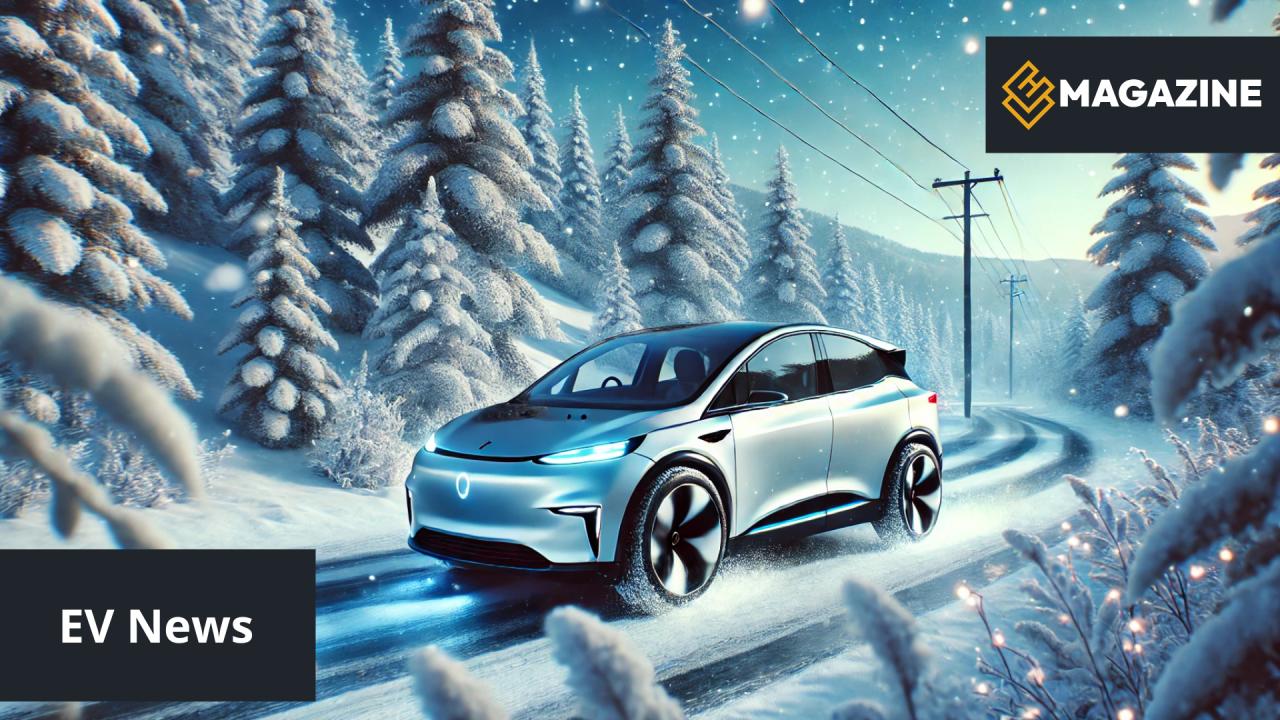EL-Prix is an annual electric vehicle test organized by the Norwegian Automobile Federation (NAF) and the Motor magazine. This test focuses on measuring real-world range, energy consumption, and other key parameters of vehicles in challenging winter conditions. The test includes both premium models and more affordable family-friendly EVs.
Testing takes place on a mix of urban routes, highways, and mountainous areas at temperatures often below freezing, simulating real winter driving conditions.
Testing Methodology
During the test, vehicles are fully charged, and their performance is measured across different driving conditions. Key parameters monitored include:
- Real-world range: Measuring the distance a vehicle can travel on a single charge.
- Energy consumption: Expressed in kWh/100 km.
- Charging time: The time required to charge the battery from 10% to 80% capacity.
Vehicles are tested under standardized conditions, and results are compared to WLTP (Worldwide Harmonized Light Vehicle Test Procedure) values, which represent laboratory-based range and consumption measurements.
Tested Models
| Model | Real-world Range (km) | WLTP Range (km) | Difference (%) | Difference (km) | WLTP Charging Time |
|---|---|---|---|---|---|
| Polestar Polestar 3 | 531 | 560 | -5.2% | 29 | 30 min |
| BYD Tang | 481.6 | 530 | -9.1% | 48.4 | 46 min |
| MINI Countryman | 355 | 399 | -11% | 44 | 30 min |
| Lotus Emeya | 436.3 | 500 | -12.7% | 63.7 | 18 min |
| BYD Sealion 7 | 436.4 | 502 | -13.1% | 65.6 | 24 min |
| Mercedes-Benz G-klasse | 380.8 | 443 | -14% | 62.2 | 32 min |
| Kia EV3 | 499.1 | 590 | -15.4% | 90.9 | 31 min |
| Porsche Taycan | 499 | 592 | -15.7% | 93 | 18 min |
| BYD Seal U | 421 | 500 | -15.8% | 79 | 43 min |
| Hongqi EHS7 | 452.3 | 540 | -16.2% | 87.7 | 25 min |
| Smart #3 | 346.1 | 415 | -16.6% | 68.9 | 30 min |
| Ford Explorer EV | 437 | 525 | -16.8% | 88 | 26 min |
| NIO EL8 | 411.9 | 503 | -18.1% | 91.1 | 20 min |
| Hyundai IONIQ 5 | 436.3 | 546 | -20.1% | 109.7 | 18 min |
| BMW i5 | 392.4 | 497 | -21% | 104.6 | 30 min |
| Volvo EX30 | 370.9 | 472 | -21.4% | 101.1 | 26 min |
| Audi Q6 e-tron | 480.8 | 616 | -21.9% | 135.2 | 21 min |
| XPeng G6 | 429.3 | 550 | -21.9% | 120.7 | 20 min |
| Porsche Macan | 428.6 | 552 | -22.4% | 123.4 | 21 min |
| Volkswagen ID.7 | 440.2 | 571 | -22.9% | 130.8 | 26 min |
| Tesla Model 3 | 531 | 702 | -24.4% | 171 | 25 min* |
| Peugeot e-5008 | 361 | 488 | -26% | 127 | 30 min |
| Voyah Dream | 343.8 | 482 | -28.7% | 138.2 | 36 min |
| Peugeot e-3008 | 347 | 510 | -32% | 163 | 30 min |
At the time of writing, charging time data was not available for some models. For Tesla, we were unable to find an official value for charging time, so an unverified figure is included.
The test results show that the best performers were the Polestar 3, followed by Chinese models BYD Tang and Mini Countryman. The differences compared to WLTP values are minimal, and these EVs handle winter conditions excellently. However, the Peugeot e-3008 struggled, with over a 30% drop in range. The second worst was the Voyah Dream, followed by another Peugeot, the e-5008. Tesla Model 3 and VW ID.7 also performed poorly in the test.
The results highlight significant disparities, showing that price alone does not guarantee performance. For instance, the Peugeot e-5008 starts at € 42 000 in Czech Republic, while the Mini can be purchased for slightly under a €40 000. Although the Peugeot is slightly larger, the Mini offers a bigger trunk in its base model.
In similar tests, a crucial factor is whether the EV is equipped with a heat pump or not.
Source: www.naf.no, Evmagazin.cz

